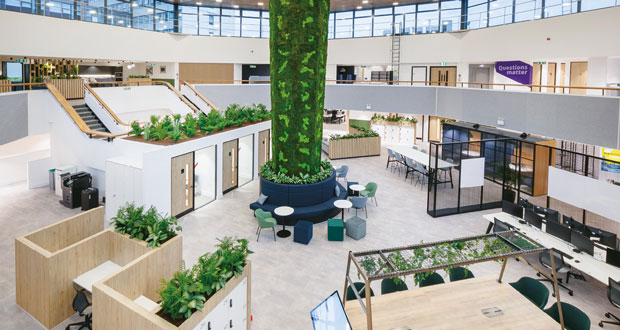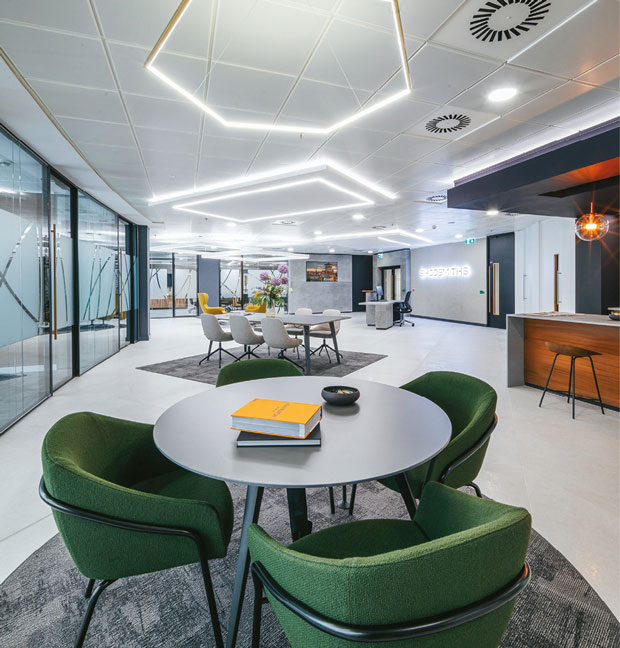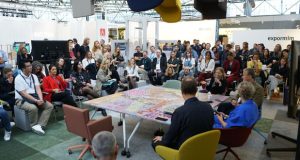ONE SIZE DOES NOT FIT ALL
Organisations are unique, with multi-faceted needs. It’s why so many have adopted variations of hybrid working rather than one permanent model. Claremont has defined four hybrid working models and says most organisations blend them as departments require different things. The four models are:
- Remote First. Remote work is the default for employees. Office space is available for employees to use as needed, but the decision is up to the individual.
- Office First. The office is the default working location for employees, who have the autonomy to choose remote work when suitable. The office is consistently occupied.
- Split Week. Employees have designated days or a specific number of days to work from the office. This model focuses on scheduling rather than location, helping to manage office density and ensure consistent occupancy.
- Designated Teams – This model assigns specific working locations to teams/ job roles based on their requirements and business needs. For example, customer service teams may work from a central office for consistent messaging and easy access to managerial guidance. While it may not seem like a hybrid model on an individual level, it takes a micro-hybrid approach on an organisational level.
Explains Ames: “All four of these models could be used within the same organisation, making it difficult for employers to make real estate decisions. The best way to embrace all these needs is by designing flexibility into the business and the workplace. We’ve seen businesses with several ‘remote first’ departments repurpose spaces and add new facilities to aid collaboration and community. For those using the split-week model, we’re using advanced booking systems for workstations and rooms to switch parts of the office on or off in line with demand. This helps to reduce energy costs and protect cohesion, as it stops employees from being spread out too thinly on low occupancy days.”
HOW CAN DESIGNERS AND FACILITIES PROFESSIONALS RESPOND?
According to Ames, one of the most effective ways facilities professionals can respond to the need for flexibility is to think both short and long-term.
“Workplace flexibility is about supporting the here and now and offering longevity. We often design spaces with dual uses, like in the case of Shoosmiths in Edinburgh, where we created an on-site café that provides the cultural heart and lunchtime hub and, acts as an informal meeting space and is large enough to accommodate the whole workforce for company meetings. We call this a hackable space as it can flex and change its use immediately or with minor changes.”
These are quite different to Future Flexible spaces, which have been designed to evolve in the longer term. He added: “We use adaptability principles to lead us to more strategic design decisions. So, for example, we might use relocatable and demountable partitioning so that any future layout changes have minimal impact on the fabric of the building, or we’ll use mobile meeting pods to create spaces within open-plan floor plates instead of building walls as they can be moved, reconfigured and upgraded easily.
“Other ideas include sound-proofing walls and partitions in large meeting rooms to allow for subdivision later down the line and building spare capacity into service zones, such as raised floors and ceiling voids. The upshot is that as needs evolve, the workplace can, too, with relative ease. Truly flexible workspaces have a combination of hackable and future flexible spaces.”
This desire for flexibility is closely tied up with the need to create more compelling reasons for employees to visit the office. To do this, employers are increasingly turning their offices into sought-after destination offices – that is; spaces people choose because of the quality experiences and enrichment they provide.
Turner expounds: “It’s moved beyond thinking about the facilities employees need to the feelings employees want. Employers must curate experiences that make employees feel inspired, supported, connected and included, as it’s how you create happy, healthy and productive workforces.”






